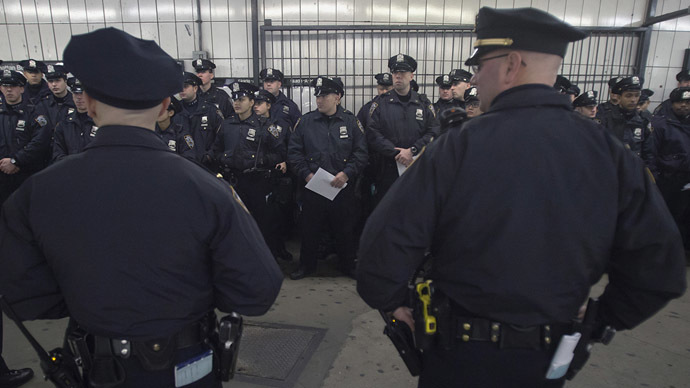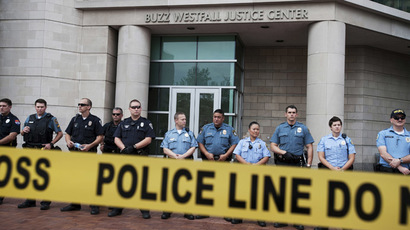Cops trained to justify use of deadly force – former US Marshal
Cops trained to justify use of deadly force – former US Marshal
Edited time: April 09, 2015 02:43

Reuters/Carlo Allegri
When it comes to officer-involved shootings, the problem lies with law enforcement’s training that instructs cops to say they felt the suspects were a threat, either to the officers or to the public, a retired US Marshal told RT.
READ MORE: 'I was sickened by what I saw' - N. Charleston police chief on video of fatal shooting
Retired Chief Deputy US Marshal Matthew Fogg, who served as a law enforcement officer for 32 years, spoke with RT’s Ben Swann about the recent spate of officer-involved shootings in which police killed unarmed suspects and claimed they feared for their safety or for the safety of others. He said the officers’ training is to blame.
“The training says that, whenever you use deadly force, you have to be able to justify it. So to justify it, you have to say either I feared for the safety of myself or the safety of the public, and that this person was an extreme danger to either party,” Fogg said.
In two recent cases – that of Officer Darren Wilson’s shooting and killing of unarmed teenager Michael Brown in Ferguson, Missouri, in August and Saturday’s incident in South Carolina, where North Charleston Officer Michael Slager fatally shot unarmed Walter Scott eight times in the back – both policemen said they feared for themselves and public safety. This despite the fact that the physical altercations ‒ and thus the threats ‒ had abated.
Fogg doesn’t believe the officers were wrong in pursuing their suspects in either case, but does think that their fears may not have been justified.
“We can pursue you as a law enforcement officer, but the deadly force was over once there was no weapon involved,” he said. “There was no reason at all for this officer [in South Carolina] to be shooting at [Scott]. Now he could have ran [sic] and chased and tracked him down, and if there had been some melee at that point ‒ guy tried to take his gun ‒ then yeah.”
The difference between the two cases, in which Wilson was not indicted but Slager has been charged with murder, is that there was video of the second incident, Fogg noted.
“I think what happened here is now once these officers ‒ when there’s no video ‒ can always say that [there was a threat], and that’s what the public outcry has been, that a lot of incidents where people realize folks were shot and killed, there [were] no weapons involved or whatever, so why did the officer shoot him?” Fogg said.
When Swann asked if the story would be very different in the South Carolina instance if there had there been no video recording, Fogg immediately agreed.
“Absolutely. Certainly. And that’s the problem, that’s why public outcry has been body cameras, videos. It is because [as] officers, we are trained to say whenever we use deadly force that line, ‘I felt a danger for myself or for the public,’” he said.
Fogg then explained how the investigations into officer-involved shootings proceed.
“You have 10 days to think about your story, get your story together. You hear from other detectives, what they came up with, and then you come up with a line that is pretty standard that says, ‘This is my justification,’”he said. “And most of the time, the public is going to go with my ‒ as a law enforcement officer, they’re going to believe me.”
He believes that body cameras, if they are treated the same way dashboard cameras are ‒ meaning they automatically switch on during interactions ‒ will help show when officers truly are justified in shooting suspects.
"Destroying the New World Order"
THANK YOU FOR SUPPORTING THE SITE!
Latest Activity
- Top News
- ·
- Everything
Sustenance
The Consequence of Loneliness: Another Missing Person Case
Devo - Fresh
© 2025 Created by truth.
Powered by
![]()


You need to be a member of 12160 Social Network to add comments!
Join 12160 Social Network